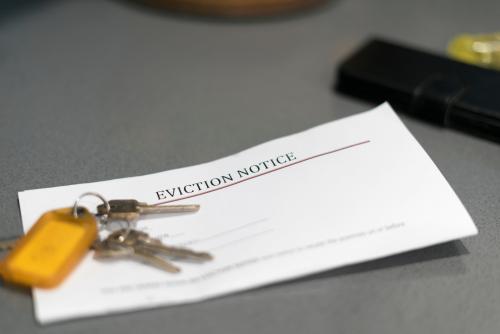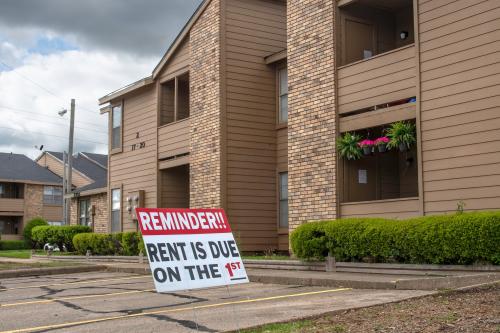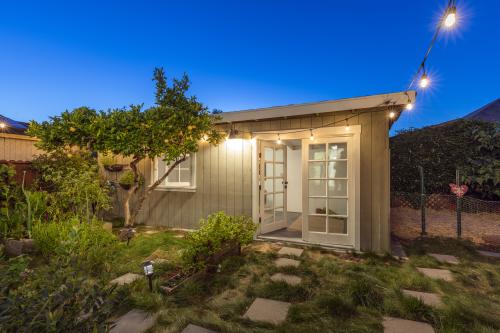With President-elect Joe Biden about to take office bolstered by Democratic control of both the House and Senate, left-leaning wonks and activists are putting together wish lists for new legislation across a myriad of issues and policy arenas.
Housing is a big one. A recent idea that’s drawing attention among housing activists—and some legislators—is to repeal the Faircloth Amendment, which bans new construction of public housing. For low-income families, the struggle to afford decent-quality, stable housing was an urgent problem long before the COVID-19 pandemic. Providing more housing support should be a priority for the incoming administration.
However, expecting local housing authorities to develop large public housing portfolios is not an effective solution. And focusing debate on the Faircloth Amendment is a red herring—a political distraction from more tangible obstacles to low-cost housing.
Below are four reasons why building more public housing is not a cure-all for the nation’s housing woes—as well as ideas for more effective solutions advocates can push for in the months ahead.
Land availability and local zoning are the main obstacles to subsidized housing
Building subsidized housing—or for that matter, market rate rental housing—is illegal in most parts of the U.S. Local zoning laws prohibit structures other than single-family detached homes on the majority of land across cities and suburbs.
Repealing the Faircloth Amendment does nothing to address this problem. Nor is this a new issue: Public housing developed from the 1950s through 1970s was largely built in poor, racially segregated neighborhoods, because that’s where government agencies could acquire land—and where middle-class white voters didn’t protest too vehemently.
Where people live—and especially where children grow up—is critical to long-term well-being, including life expectancy, health, and income. Absent any serious plan to legalize apartments in high-opportunity communities, proposals to build more public housing will only exacerbate racial and economic segregation—to the harm of low-income families.
Public agencies aren’t designed to be real estate developers
Proposals for “the government” to build public housing are often vague about which agency or department they mean. While funding for public housing originates at the federal level, the properties are operated by more than 3,300 local housing authorities across the country. And most of them don’t have recent experience with new construction—a long, complicated, risky business under the best of circumstances. Public agencies operate under more rigid rules and processes than private sector companies as well; for instance, procurement and labor requirements that make construction substantially more difficult and more expensive.
Today, nearly all new subsidized housing is built and managed by specialized nonprofit or for-profit developers. So, despite those calls for “the government” to build more housing, most housing authorities don’t have the capacity or the desire to undertake new construction projects.
High-quality subsidized housing needs a long-term commitment, not a brief flirtation
As any homeowner knows, maintaining a home in good condition requires ongoing investments of time and money. In that sense, most existing public housing properties have been slowly deteriorating for decades, plagued by water damage, mold, vermin infestations, and aging mechanical systems. In 2017, Housing and Urban Development (HUD) Secretary Ben Carson was famously trapped in a malfunctioning elevator while visiting a Miami high-rise project. With that in mind, why would housing authorities sign up to build more apartments when they already face enormous maintenance backlogs and insufficient capital funds?
The federal government’s history of infrastructure funding is like parents who buy their 16-year-old a new car, then refuse to chip in for insurance, gas, or repairs. (See also: unmet capital needs for roads, bridges, and subways.)
Writer Noah Smith recently proposed that the U.S. adopt a public housing model like Singapore, where the government builds apartments and then sells them at low prices to households. But even that doesn’t solve the problem, instead merely shifting the burden of future maintenance expenses onto households—a problem familiar to many low-income homeowners in the U.S. today.
Other types of housing subsidy give taxpayers more bang for their buck
Constructing new housing is expensive, especially in coastal metro areas where affordability problems are most acute. Developing subsidized housing is—paradoxically— more expensive than market rate housing, because of the complexity of assembling financing. New construction is also slow: It can take a decade or longer to complete subsidized apartments in tightly regulated markets.
If the goal of federal policymakers is to help as many low-income households as possible, then a strategy of newly constructed public housing is perhaps the least effective path. Increasing funds for housing vouchers or for the acquisition and rehabilitation of existing apartments through the National Housing Trust Fund would stretch subsidy dollars to cover many more households more quickly, and often in higher-opportunity neighborhoods. Shoring up the long-term physical and financial viability of existing subsidized properties—such as through HUD’s Rental Assistance Demonstration (RAD) program—would also be more cost effective than new construction.
In sum, helping low-income families gain access to good-quality, stable, affordable housing in high-opportunity neighborhoods should be a goal of the incoming Biden administration and the new Congress. But building more public housing is the wrong way to achieve that goal.







Commentary
Four reasons why more public housing isn’t the solution to affordability concerns
January 14, 2021